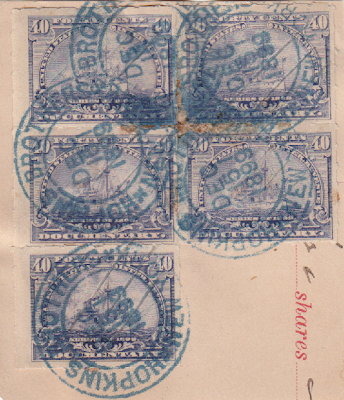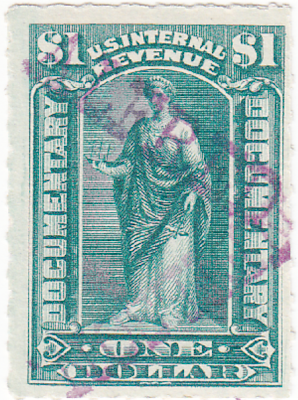HOPKINS BROTHERS
DEC
15
1899
NEW YORK.
Thompson scan
The Hopkins Brothers embroiled themselves in the middle of an election wagering escapade in 1897 the same year the pictures above were taken. The following article concerns the 1897 race for Mayor of New York and the three contenders for the job: Mr. Low, Colonel Tracy, and Robert Van Wyck. Mr. Van Wyck would win as a part of the Tammany Hall ticket. As The New York Times reported on October 21 1897:
BLUFFING IN WALL STREET
Col. Swords Goes There Ready to Wager from $1000 to $5000 on Tracey.
BROKERS EASY TO TAKE IT
He Puts Up a Few Minor Wagers and Through a Friend Agrees to Take the Larger Sum, but Fails to Reappear.
Wall Street brokers who bet--and who when they bet like to see the money put up--were in anxious mood yesterday. It was all on account of the amicable Colonel Swords whose province it is whenever an election is pending to drop down on New York and offer to bet large bundles of money on whoever his party's candidate may be.
On Tuesday Col. Swords descended into the depths of Wall Street. He had heard discouraging tales from the Stock Exchange district. What especially had stirred up the brave man was that somebody could be found in Wall Street willing to bet that General Tracy would not poll more votes than Mr. Low. Col. Swords had figured out that General Tracy is to receive about 100,000 majority over all the other candidates combined and the suggestion that any one candidate was going to come anywhere near approaching Gen. Tracy fired the heroic soul tremendously.
Down in Wall Street, Col. Swords came across a cheery friend in Franklin W. Hopkins of the Stock Exchange house of Hopkins Brothers, and through Mr. Hopkins he learned that it was too true that cynical brokers were ready to bet, and bet heavily, against what Swords was pleased to call Gen. Tracy's walkover. It was even true, so Mr. Hopkins blandly revealed that it would be easy to get big bets that Mr. Tracy would not outrun Mr. Low.
"Do you suppose they'd bet $1,000 even?" was the anxious inquiry.
Mr. Hopkins thought they would.
Col. Swords put some hundred-dollar bills into his friend Hopkins's possession, and Mr. Hopkins went into the Stock Exchange crowd to return a little later with a report that all the money had been taken.
"And do you think you could persuade them to take as much as $5,000?" Col. Swords seemed still exceedingly anxiously to get quickly into a "good thing."
Would Like More Than $5,000
Mr. Hopkins made another tour in among the brokerage bretheren. In the space of one minute and a half he had obtained enough information to satiate every bit of curiosity in the Swords outfit.
"You can get your full $5,000." This was the information provided for Col. Swords.
"And did you take the whole amount?" Such the eager tone of Col. Swords.
"Did you give me the whole amount?" This the bland voice of Broker Hopkins, business man, not politician.
The Colonel looked pained. But the Colonel was a soldier still. And with heroic front said he this:
"Go back into the Stock Exchange, young man, and tell those soulless wretches there that though I don't happen to have brought the rest of this money today I'll be here tomorrow morning early, and the funds will be here too. Don't let them get away. Hold them to their promise to let me meet them tomorrow; don't let them realize too quickly the dreadful risk they are taking in betting with Col. Swords, THE Col. Swords." Then up town the brave man hurried taking with him a memorandum list of about a score of New York Stock Exchange brokers, each of whom was yesterday in quest of a gallant Colonel lost, strayed, or stolen, for through all the long day one Swords came not, neither Swords nor the cash of him.
Luckily for Franklin W. Hopkins, (business man, not politician) he underwrote none of the uncovered bets. Mr. Hopkins personally feels confident, he says that Col. Swords, after all, will finally appear, and that equipped with ample funds. This cheerful opinion was not at the end of business yesterday, however, quite universal under the eaves of the Stock Exchange.
Betting on Van Wyck.
There was a little "bluff" betting in Wall Street yesterday. The quotations on Low beating Tracy were 2 to 1. E. B. Talcott, of Bell & Co., who are said to do the Tammany wagering, offered $2,800 to $4,000 that Van Wyck will get more votes than Tracy and Low together. Davis Johnson of the Stock Exchange booked a bet of $5,000 to $2,0000 on Van Wyck "against the field."
*******
Aspirants in the 1897 race for Mayor of New York:
Robert Van Wyck, General Tracy, and Seth Low
The Tammany Hall candidate, Mr. Van Wyck, won in a landslide.
Colonel Swords lost his money on these bets; I suppose Franklin Hopkins became something of a hero to his fellow brokers on the Exchange who made so much easy money off Colonel Swords.




















































